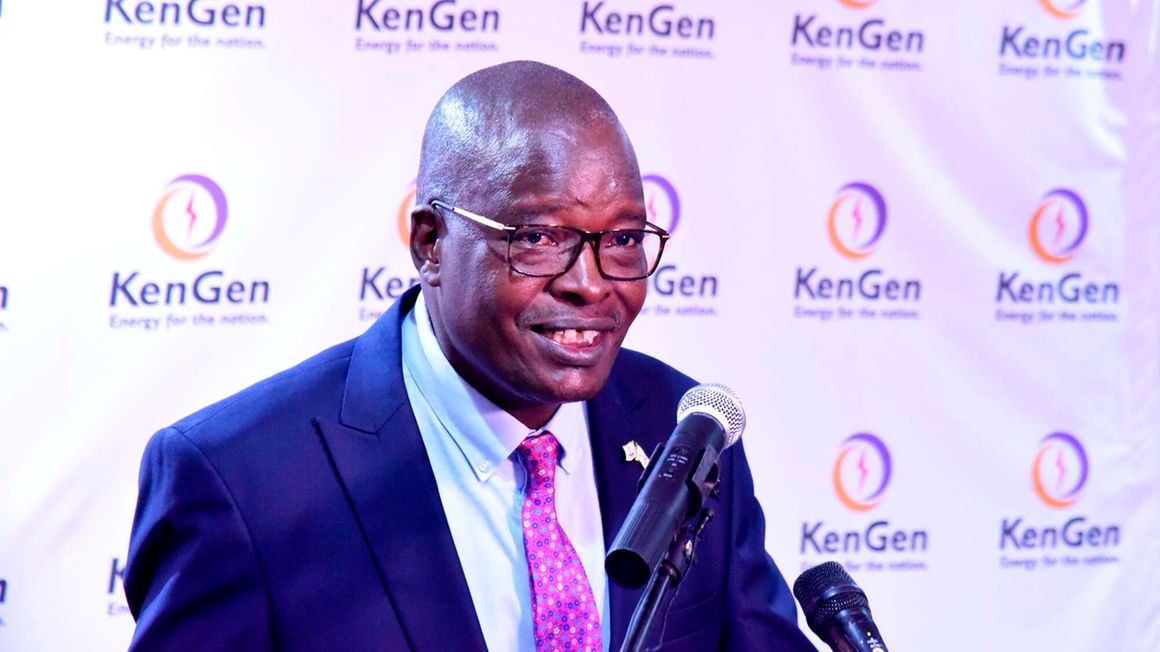
Kenya Electricity Generating Company PLC (KenGen) Acting Managing Director and CEO, Abraham Serem during a KenGen media briefing on January 6, 2022. PHOTO | DIANA NGILA | NMG
The demand for electricity in Kenya hit a new record of 2132.29 megawatts in January, putting pressure on the country to step up its generation capacity.
The new peak reached on January 18 has been attributed to the continued recovery of businesses from the depressed economic environment in the wake of the pandemic.
“We have recorded an increase in the demand for electricity in Kenya, which continues to grow, driven by the high business activity as the country recovers from the effects of Covid-19,” said KenGen chairman Samson Mwathethe.
Read: Rising electricity demand pushes Kenya on verge of rationing
The country had only previously set another record demand last July, pointing to the pent-up demand for electricity by households and businesses.
The steady rise in demand means Kenya will be required to increase its energy generation or risk load shedding or power rationing for some customers at peak usage should the electricity demand outstrip supply.
According to the Energy and Petroleum Regulatory Authority (Epra), peak demand represents a measure of the highest load on the electricity grid, which occurs between 8pm and 8:30pm in the coastal region and between 7:30pm and 8pm for the rest of the country.
Peak demand for the 2021-22 financial year recorded an improvement of 3.2 percent to 2056.67 megawatts from 1993.63 megawatts recorded in the previous fiscal year.
During the period, the installed capacity, the maximum power generation capacity that the power plants can achieve, rose to 3074.34 megawatts from 2972 megawatts as geothermal and solar generation increased by 86 megawatts and 120 megawatts, respectively.
“The increased contribution of the two sources is attributed to the addition of 40 megawatts from Cedate Solar power plant, 40 megawatts from Selenkei Solar power plant, 40 megawatts from Malindi Solar and 86 megawatts from Olkaria 1 unit 6 to the grid,” said Epra in a report published earlier this month.
Geothermal accounted for the largest share of installed capacity at 30.87 percent or 949.13 megawatts ahead of hydro at 837.58 megawatts and thermal at 646.32 megawatts.
KenGen plans to tap new technologies to boost the output of existing power plants.
“This year we plan to leverage new technologies to rehabilitate our oldest geothermal power plant whose first unit was commissioned in 1981, the 45 megawatts Olkaria. This project seeks to give it a new lease of life and increase its generation capacity to about 63 megawatts,” said KenGen acting managing director Abraham Serem.
KenGen is also seeking to add 305 megawatts of geothermal power projects consisting of 280 megawatts from geothermal sources in Olkaria and 25 megawatts from the Eburru geothermal field.
The company is also set to up-rate the turbines for Olkaria 1, additional units 4 and 5 and Olkaria IV, increasing their capacity by 40 megawatts.
This week’s application by Kenya Power for a tariff review is, meanwhile, expected to anchor the development of an additional generational capacity to the grid as the government seeks to track growth in demand to generation.
Read: Electricity use jumps to four-year high
“The proposed revenue requirement will meet power purchase costs obligation for existing and committed additional power generation plants for KenGen and independent power producers in the next three years,” said Kenya Power in its tariff application to Epra.
→ kmuiruri@ke.nationmedia.com






No comments :
Post a Comment